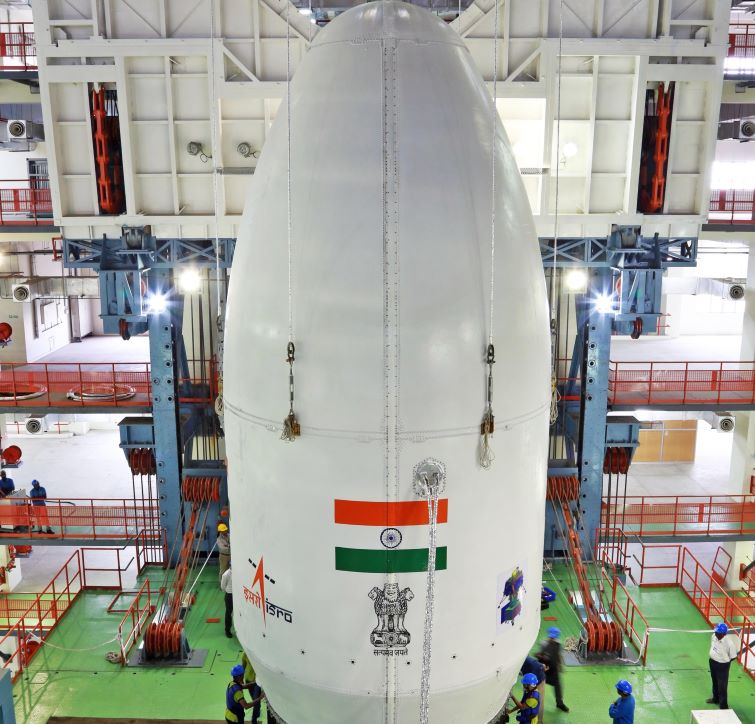 Chandrayaan 3
Chandrayaan 3
Chandrayaan-3 spacecraft integrated with launch vehicle: ISRO
Chennai/IBNS/UNI: The Indian Space Research Organisation (ISRO) on Wednesday announced that the Chandrayaan-3 spacecraft was integrated with the Launch Vehicle Mark-III (LVM3).
The third lunar mission will take place later this month from the spaceport of Sriharikota, where all arrangements for the mission are in full swing.
The launch will take place from the Second Launch Pad at the SHAR Range.
In a tweet, ISRO said, "Today, at Satish Dhawan Space Centre, Sriharikota, the encapsulated assembly containing Chandrayaan-3 is mated with LVM3."
🚀LVM3-M4/Chandrayaan-3🛰️ Mission:
— ISRO (@isro) July 5, 2023
Today, at Satish Dhawan Space Centre, Sriharikota, the encapsulated assembly containing Chandrayaan-3 is mated with LVM3. pic.twitter.com/4sUxxps5Ah
The launch window for Chandrayaan-3 is between July 12 and 19.
Chandrayaan-3 is a follow-on mission to Chandrayaan-2 to demonstrate end-to-end capability in safe landing and roving on the lunar surface.
It consists of Lander and Rover configurations. The propulsion module will carry the lander and rover configuration till the 100 km lunar orbit. The propulsion module has Spectro-polarimetry of Habitable Planet Earth (SHAPE) payload to study the spectral and Polari metric measurements of Earth from the lunar orbit.
The Lander payloads are Chandra’s Surface Thermophysical Experiment (ChaSTE) to measure the thermal conductivity and temperature; the Instrument for Lunar Seismic Activity (ILSA) for measuring the seismicity around the landing site; Langmuir Probe (LP) to estimate the plasma density and its variations.
A passive Laser Retroreflector Array from NASA is accommodated for lunar laser ranging studies.
The Rover payloads are Alpha Particle X-ray Spectrometer (APXS) and Laser Induced Breakdown Spectroscope (LIBS) for deriving the elemental composition in the vicinity of the landing site.
Chandrayaan-3 consists of an indigenous Lander module (LM), Propulsion Module (PM) and a Rover with the objective of developing and demonstrating new technologies required for Inter planetary missions.
The Lander will have the capability to soft land at a specified lunar site and deploy the Rover which will carry out in-situ chemical analysis of the lunar surface during the course of its mobility.
The Lander and the Rover have scientific payloads to carry out experiments on the lunar surface. The main function of PM is to carry the LM from launch vehicle injection till final lunar 100 km circular polar orbit and separate the LM from PM.
Apart from this, the Propulsion Module also has one scientific payload as a value addition which will be operated post-separation of the Lander Module.
ISRO sources said more fuel has been added to the lander, along with new equipment, and also strengthened it. Chandrayaan-3 will be going in the same path as its predecessor, and will also be landing at the same site.
Support Our Journalism
We cannot do without you.. your contribution supports unbiased journalism
IBNS is not driven by any ism- not wokeism, not racism, not skewed secularism, not hyper right-wing or left liberal ideals, nor by any hardline religious beliefs or hyper nationalism. We want to serve you good old objective news, as they are. We do not judge or preach. We let people decide for themselves. We only try to present factual and well-sourced news.







